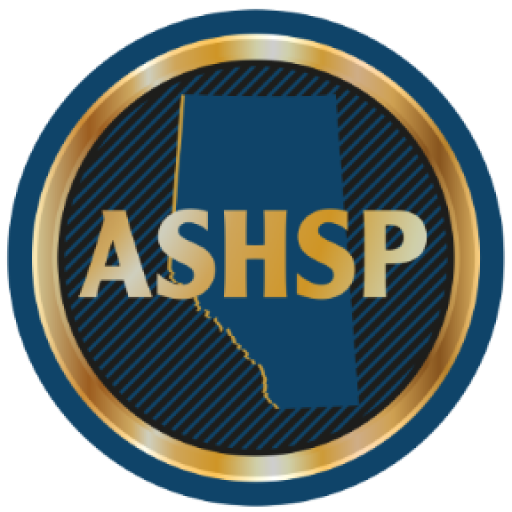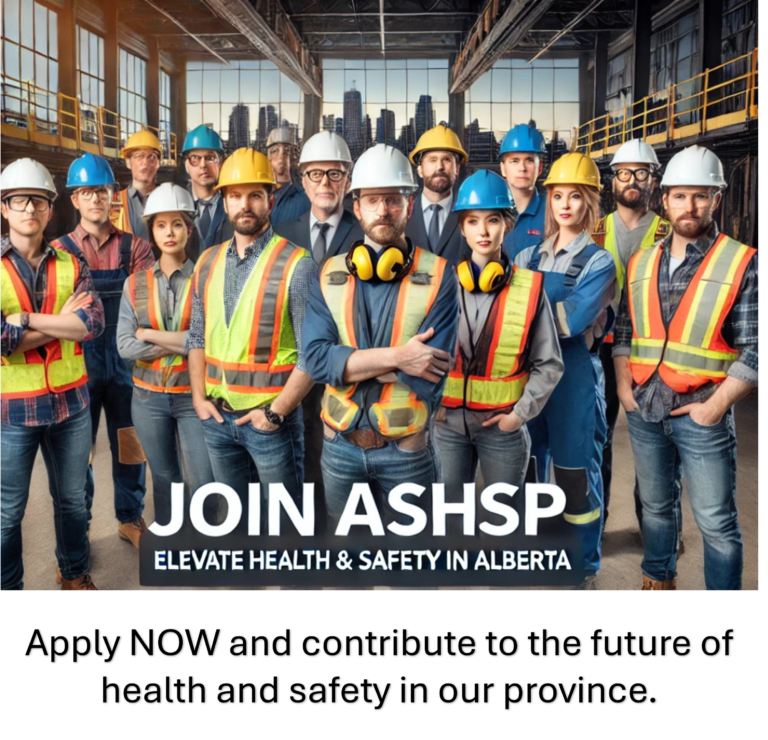Frequently Asked Questions
The goal of the Society is to become the registered, self-regulating body (the “College”) for the health and safety profession in Alberta. When this occurs, the College will obtain legally protected title protection for professionals who
- hold recognized designations (e.g., CRSP CHSC, CSP, CMIOSH, CFIOSH, ROH, ROHT, CIH);
- meet certain Alberta-specific competency requirements; and
- agree to become professional members of the College, beholden to a code of ethics and adhere to good practice standards while conducting health and safety work.
Once title protection is obtained, the College will work with government to obtain scope of practice protection in certain integral areas of health and safety work that require the use of a regulated professional (e.g., high-risk occupational hygiene work, health and safety program development for high-risk industries, etc.)
The goal of the Society is to become the registered, self-regulating body (the “College”) for the health and safety profession in Alberta. When this occurs, the College will obtain legally protected title protection for professionals who
- hold recognized designations (e.g., CRSP CHSC, CSP, CMIOSH, CFIOSH, ROH, ROHT, CIH);
- meet certain Alberta-specific competency requirements; and
- agree to become professional members of the College, beholden to a code of ethics and adhere to good practice standards while conducting health and safety work.
Once title protection is obtained, the College will work with government to obtain scope of practice protection in certain integral areas of health and safety work that require the use of a regulated professional (e.g., high-risk occupational hygiene work, health and safety program development for high-risk industries, etc.)
No. This initiative is focused on voluntary registration (as opposed to mandatory registration) for the purpose of securing certain professional titles, which will be protected by law. If you decided not to become a member of the College, you can still practice in the field, but you will not be permitted to use certain designation/titles. In the future, if scope of practice protection is obtained, you may be required to have certain types of health and safety work certified by a regulated professional.
The professional regulatory organization will be required to establish an inter-provincial mobility arrangement to allow professionals from other Provinces to use protected titles and perform work within Alberta. Therefore, the regulation of the profession within Alberta will not impede the ability for out-of-province professionals from performing work in Alberta.
The Constitution Act, 1867 provides the provinces with the exclusive jurisdiction to regulate professions operating within its borders. That is why you only see provincial professional regulatory bodies (e.g., Alberta College of Physicians and Surgeons, Law Society of Alberta, the Association of Professional Engineers and Geoscientists of Alberta, etc.).
You will continue to be able to work in Alberta as you did before. If you wish to obtain the title protected designation, you will need to become a member of the College.
- holding a recognized designation or certification;
- meeting educational, experiential, and competency testing requirements that are Alberta-specific; and
- agreeing to be subject to a code of ethics.
The Alberta designation will provide you with the ability to use titles protected under Alberta law. In time, these titles will be highly respected in the industry as all title holders will be required to have met
- competency standards;
- experiential training; and
- OHS-specific educational requirements
that are appropriate to provide professional occupational health and safety services in Alberta. Also, there will be public confidence in professionals who hold such protected titles, as such professionals will be beholden to a code of ethics and disciplined for breaches of that code of ethics or for providing sub-standard services.
You may still do health and safety work in Alberta without obtaining an Alberta title protected
designation. Also, a designation from one of the national/international bodies (e.g., BCRSP, CRBOH, COHNA) may expedite the process for obtaining an Alberta protected designation.
The specific protected titles and designations are still under development; however, they will need to be amendable to a provincially regulated profession (i.e., they will not contain the word “Canadian” in the title). Also, they will not be the titles and designations currently used by other provincial, national, and international bodies (e.g., CRSP, CRST, CSP, CMIOSH, CHSC, ROH, ROHT, CIH, COHN etc.).
When the services provided by a professional have an impact on the public interest, there is a compelling reason to have that profession regulated (with title protection, scope of practice protection, competency safeguards, code of ethics, and discipline). The following are some examples of regulated professions in Alberta:
- medical doctors;
- nurses;
- engineers;
- lawyers;
- real estate agents;
- electricians;
- teachers;
- forestry professionals;
- biologists; and
- chemists.
There are two methods of regulating a profession:
- government-regulated professions (e.g., teachers); or
- self-regulated professions (e.g., lawyers, medical doctors, engineers, etc).
For self-regulated professions, the body wishing to regulate must apply to the government and establish the following elements:
- it is in the public interest to regulate the particular profession;
- the proposed self-regulating body has the support of a significant number of individuals who currently practice in the profession;
- the proposed self-regulating body has the support of key stakeholders; and
- the proposed self-regulating body has the means, financial and otherwise, to properly regulated the profession in the public interest.
All the self-regulating profession bodies, which operate in Alberta, have gone through this process. When their application was approved by government, an enabling statute or regulation was enacted to provide the self-regulating body with the legal authority to regulate the profession, afford legally protected title protection and, in some case, define scope of practice protection (i.e., only regulated members can do certain type of work).
Currently, there are no jurisdictions in the world that have legislated title protection, scope of practice protection, and created a self-regulating body to oversee the profession. If this initiative is successful, Alberta would be the first jurisdiction in the world to do so and would establish the modern occupational health and safety profession.
The Constitution Act, 1867 will not allow a profession to be regulated at a national level or by a national standard. Though Alberta could adopt such a standard if one were to be created, the Alberta self-regulating body would need to ensure that the standard is appropriate for the Alberta profession and properly protects the public interest of Albertans.
This initiative is being led by a volunteer group of health and safety professionals (representing many different disciplines and industry sectors) and other supportive professionals. These professionals believe that ensuring the competency of individuals who practice in the area of health and safety is imperative in order to eliminate/reduce workplace injuries and illnesses and promote the health and safety of workers.
No. This is not a government-led initiative; rather, it is a profession-led initiative. When the profession is ready, it will apply to government for regulated profession status.
The ASHSP will pursue the goal of “registered association” by following the process established by the Alberta Government:
STEP 1: Create the Alberta Society of Health and Safety ProfessionalsDONESTEP 2: Determine Scope for InclusionDONE- STEP 3: Establish the Governing Body as required by the Government of Alberta
STEP 4: Create a Code of EthicsDONE- STEP 5: Establish Experiential Requirements and Programs
- STEP 6: Establish Educational Requirements and Educational Institution Accreditation
- STEP 7: Establish Competency Testing Standards
STEP 8: Establish a Disciplinary ProcessDONE- STEP 9: Apply to Government to Establish a Professional Statute and Be Reconstituted as the
Professional Regulatory Organization
There are plenty of studies to support the fact that a solid health and safety management system does not cost money, it saves/makes money through increased productivity, lower incident rates, insurance rebates and premium reductions, and the avoidance of the costs associated with health and safety incidents and non-compliance with legislated requirements.
A regulated health and safety profession will not require an employer to hire a full-time health and safety professional holding an Alberta designation; though, it may require an employer to retain the services of a regulated professional for certain key types of health and safety work. Again, retaining such a regulated professional is an investment (rather than a cost) that will strengthen the employer health and safety management system and profit the employer.
Experiential training is on-the-job training, as opposed to classroom/course training; therefore, the creation of an experiential training program will not impact organizations that offer training courses.
The experiential training program being considered by the Society is mentorship, apprenticeship, or sponsorship to provide oversight of the experiential component of a candidate’s training. This is necessary to ensure that the on-the job experience obtained by future professionals is appropriate and will prepare them to be competent and conscientious members of the profession.
The ASHSP is working towards the formal application being submitted to the Alberta Government in 2026.

